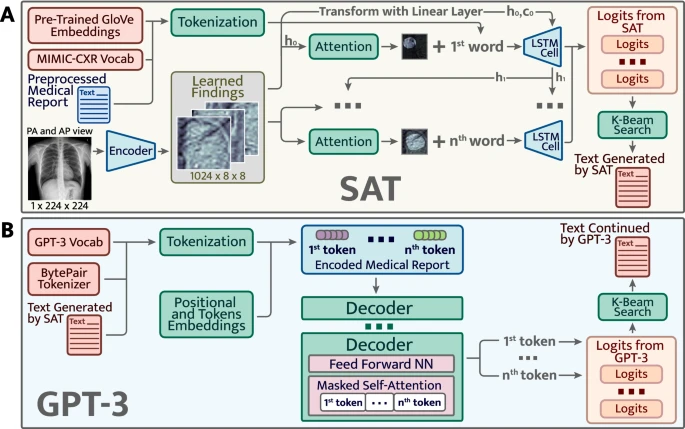-
Notifications
You must be signed in to change notification settings - Fork 0
New issue
Have a question about this project? Sign up for a free GitHub account to open an issue and contact its maintainers and the community.
By clicking “Sign up for GitHub”, you agree to our terms of service and privacy statement. We’ll occasionally send you account related emails.
Already on GitHub? Sign in to your account
New references #6
Comments
|
Exploring Discrete Diffusion Models for Image Captioning : https://github.com/buxiangzhiren/DDCap (text generation) |
|
Model selection:
|
|
Have a look to some relevant references on transformers for report generation https://github.com/mindflow-institue/Awesome-Transformer#report-generation |
|
Many thanks! It's really helpful. I have rewritten the aim and some method parts of the dissertation. If you have time, could you help me check them? 😉
link:https://www.overleaf.com/project/63e14ed20861d600c741aa3a
best wishes,
Xiaoning Zhu
…________________________________
发件人: Miguel Xochicale, PhD ***@***.***>
发送时间: 2023年3月22日 20:33
收件人: budai4medtech/amir ***@***.***>
抄送: Zhu, Xiaoning ***@***.***>; Comment ***@***.***>
主题: Re: [budai4medtech/amir] New references (Issue #6)
⚠ Caution: External sender
Have a look to some relevant references on transformers for report generation https://github.com/mindflow-institue/Awesome-Transformer#report-generation
—
Reply to this email directly, view it on GitHub<#6 (comment)>, or unsubscribe<https://github.com/notifications/unsubscribe-auth/A27TNNSQG4WZN3PF4UE3GALW5NOYBANCNFSM6AAAAAAVDAX5NA>.
You are receiving this because you commented.Message ID: ***@***.***>
|
|
This paper seems relevant to your work. Have a look to it
Cardillo, F.A. (2023). Baselines for Automatic Medical Image Reporting. In: Filipovic, N. (eds) Applied Artificial Intelligence: Medicine, Biology, Chemistry, Financial, Games, Engineering. AAI 2022. Lecture Notes in Networks and Systems, vol 659. Springer, Cham. https://doi.org/10.1007/978-3-031-29717-5_4 |
|
Liu, Zhengliang, et al. "c." arXiv preprint arXiv:2306.08666 (2023). |
|
[heart] Zhu, Xiaoning reacted to your message:
…________________________________
From: Miguel Xochicale, PhD ***@***.***>
Sent: Thursday, June 22, 2023 10:13:00 PM
To: budai4medtech/amir ***@***.***>
Cc: Zhu, Xiaoning ***@***.***>; Comment ***@***.***>
Subject: Re: [budai4medtech/amir] New references (Issue #6)
⚠ Caution: External sender
Liu, Zhengliang, et al. "c." arXiv preprint arXiv:2306.08666 (2023).
* https://arxiv.org/pdf/2306.08666.pdf
* https://huggingface.co/spaces/allen-eric/radiology-gpt
—
Reply to this email directly, view it on GitHub<#6 (comment)>, or unsubscribe<https://github.com/notifications/unsubscribe-auth/A27TNNV4EBBIMUXHFBUJCMLXMS7OZANCNFSM6AAAAAAVDAX5NA>.
You are receiving this because you commented.Message ID: ***@***.***>
|
Dundamadappa, Sathish Kumar. "AI tools in Emergency Radiology reading room: a new era of Radiology." Emergency Radiology (2023): 1-11. |
https://arxiv.org/abs/2308.01317 |
|
|
Polina Golland presents good lines of research on applications of chest x-ray to predict pulmonary edema (mild/severe fluid in the lugs):
Video is here: https://www.youtube.com/watch?v=p4duojuQmh0 |



This issue is to post any related references, code and data.
The text was updated successfully, but these errors were encountered: